
Bærums Verk is a village in Bærum in Akershus, Norway, with a population of about 8000. It is located on both sides of the river Lomma.

Jarlsberg was a former countship that forms a part of today's Vestfold county in Norway.
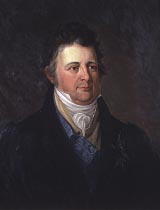
Johan Caspar Herman Wedel Jarlsberg was a Norwegian statesman and count. He played an active role in the constitutional assembly at Eidsvoll in 1814 and was the first native Norwegian to hold the post of governor-general during the union with Sweden.

Ketil Melsted Johnsen Motzfeldt was Norwegian Naval Officer and Government Official.
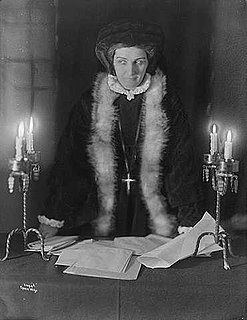
Ingerd Ottesdotter (Rømer) was her era's wealthiest landowner in Norway. She was the ultimate heiress of the noble Rømer family and a political intriguer. Lady Ingerd is noted for having orchestrated her powerful sons-in-law to support her goals. Her fame was the inspiration for Henrik Ibsen's play Lady Inger of Ostrat.

Yngvar Nielsen was a Norwegian historian, politician, geographer and pioneer of tourism in Norway.
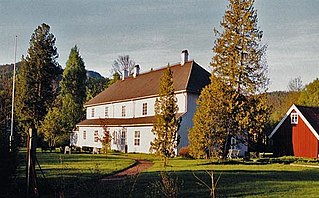
Eidsfoss is a village in Hof municipality, Vestfold county, Norway. It is located near Lake Eikeren.
Otto Joachim Løvenskiold was a Norwegian judge and politician. He served three terms in the Parliament of Norway, and served as Mayor of Kristiania from 1869 and 1876. He was a Supreme Court Justice from 1854 to his death.

Bogstad Manor is a historic Manor House and former estate located in the borough of Vestre Aker in Oslo, Norway. It is situated in the northwestern part of Oslo.
Peter Martin Anker was a Norwegian diplomat. He worked for the League of Nations, Red Cross and United Nations before, during and after the Second World War. He was then an ambassador in different European, Asian and African countries from 1951 to 1973. He was stationed in six different countries, but with side responsibilities for other countries, he was an ambassador in fifteen different countries during his career.
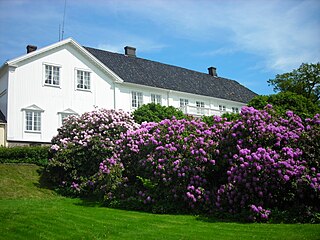
Peter Martin Anker was a Norwegian landholder and politician.

Einar Westye Egeberg Sr. was a Norwegian businessperson and politician for the Conservative Party.

Falsen, also de Falsen, is a Danish and Norwegian noble family.
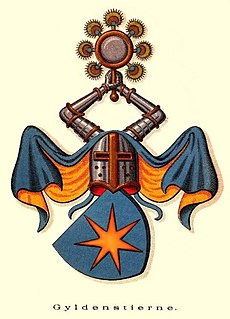
Gyldenstjerne, also spelled Gyldenstierne and in Swedish Gyllenstierna, is a Danish, Norwegian, and Swedish noble family divided into various branches and ranks. It is one of the oldest noble families in Scandinavia. The family surname appears, in the form of Guildenstern, in William Shakespeare's tragedy The Tragedy of Hamlet, Prince of Denmark. The surname should not be confused with Gyldensteen, the name of another short-lived Danish noble family, first recorded in 1717 and which became extinct in 1749.
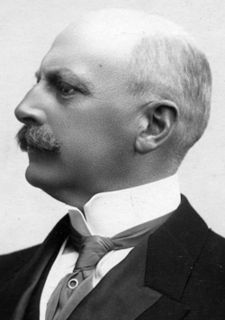
Baron Frederik (Fritz) Hartvig Herman Wedel Jarlsberg was a Norwegian aristocrat, jurist and diplomat.

Ferdinand Carl Maria Wedel-Jarlsberg was a Norwegian military officer and commanding general of the Royal Norwegian Army.
Events in the year 1779 in Norway.
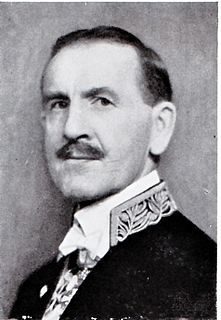
Peder Anker, Count of Wedel-Jarlsberg was a Norwegian courtier, military officer and estate owner. He served as Lord Chamberlain for King Haakon VII of Norway from 1931 to 1945 and was one of the King's closest confidants for over thirty years. In 1946 he succeeded his brother as head of the house of Wedel-Jarlsberg and feudal count (lensgreve), the highest rank of the Dano-Norwegian nobility and equivalent to Duke in other countries.

Esviken is a villa surrounded by an elaborate garden. It is located on a former farm on Leangbukta bay between Vettre and Konglungen in Asker, Norway.

Jarlsberg Manor three kilometres northwest of the centre of the town of Tønsberg in Vestfold, Norway has traditionally been the residence of members of the Wedel-Jarlsberg family.























